A spot in the XI is a team’s gift to a player. Versatility is the player’s gift to the team. Given how the vagaries of sport throw a million permutations and combinations, the best teams are those which have a blend of the specialists and the versatile players.Test cricket is a game of specialists, but there are two types of versatile players who have proved invaluable to the team. There are all-rounders who can bat and bowl and then there are those batsmen who can bat at different positions. Interestingly, one of the basic purposes of this exercise is to probe the numbers raked up by greats and see how they came, where they came and how differently they came – a tale of skills, grit and guts that gets veiled by other paraphernalia that stats throw up.Some players deserve a special mention for that unique tenacity to last anywhere, score anywhere. Every team needs at least one man who could bat at multiple positions. It helps in quite a few ways:Makes it tougher for opponents to plan a strategyHelps you nurture younger players by shielding themHelps you attack or defend based on the conditionsThe team’s covered when an important player is out because of injury or has had to retire.It could also help with left and right combination.The game has seen some players who added an aura to a specific position. Sachin Tendulkar at No.4, Jacques Kallis at No.3, Shivnarine Chanderpaul at No.5, etc. were legendary with tons of runs and innumerable tons. But, it is also worthwhile to take a look at those players who were versatile and played at different positions and were successful. So, what defines success at multiple positions?At least 500 runs in a particular position (to make sure we have a decent sample size)An average of at least 40 at each of the positions. This is really tough to achieve. Only a select few players in the history of the game have scored at more than an average of 40 at three different positions with 10 innings in the minimum. Rahul Dravid, Shivnarine Chanderpaul and Inzamam-ul-Haq are players who just fall short of all the criteria despite scoring sizeable number of runs at multiple positions.Truly great batsmen were those who averaged over 40 at each of the three positions and over 50 in at least one position.It is to be noted that sometimes, some batsmen had quite a few innings lower than their preferred position, like No.6 instead of No.5 because of the night-watchman scenario which changes the order.Here are greats, who really stand out amidst tons and tons of numbers. Mind you, this is not an exhaustive list and there are a few others who satisfy the above results, but these players are amongst the most predominant in the contemporary context.It hasn’t been possible to cover all players who satisfy the criteria from years gone by. Vinoo Mankad, for instance, remains the only Indian to have batted at all position from 1 to 11.
#11 Honourable Mention - Rahul Dravid and Shivnarine Chanderpaul
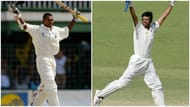
Innings | Runs | Average | 50s/100s | |
|---|---|---|---|---|
No.1&2 | 23 | 807 | 42.47 | 4/1 |
No.3 | 219 | 10524 | 52.88 | 50/28 |
No.5 | 11 | 308 | 38.5 | 1/1 |
No.6 | 8 | 413 | 68.83 | 2/1 |
Famously called ‘the wolf who lived for the pack’ by Harsha Bhogle, Dravid, the quintessential team man, is the one player who’ll always have a team’s back. He battled the toughest conditions in Tests laying foundations for many a great Test wins at home and abroad. Scoring 13288 runs in 164 matches, Dravid finished with an average of 52.31, with 99 50+ scores, with a record for most balls faced in Test cricket by any batsman.
The record holder for most catches on the field, Dravid also moved up and down a fair bit, in spite of raking up the second most number of runs for a No.3 batsman. He opened the innings when India had trouble finding a reliable opener. He moved down to No.6 when they needed Laxman’s crisp and fluent stroke-play at No.3. He moved back to No.3 when India had to battle with solidity in alien conditions.
Dravid had brilliant averages opening and at No.3 and No.6. He fell marginally short at No.5. Dravid though scored more than 500 runs only at two positions and was one of India’s permanent fixtures at No.3.
Shivnarine Chanderpaul has been the bedrock of the West Indian middle order getting better like wine, with age, holding his team through its worst phases, especially after the retirement of greats like Brian Lara and Carl Hooper. Chanderpaul with a unique stance and innocuous presence is the architect of some great West Indian victory and rescue missions.
Handling the tail-end and running out of partners was a common sight before his unceremonious exit, when he was dropped in favour of youngsters who had hardly done much to nudge the great man out.
Innings | Runs | Average | 50s/100s | |
|---|---|---|---|---|
No.4 | 42 | 1233 | 34.25 | 7/2 |
No.5 | 151 | 6883 | 56.41 | 35/19 |
No.6 | 49 | 2528 | 64.82 | 16/7 |
No.3 | 29 | 925 | 34.25 | 6/1 |
#10 Ricky Ponting
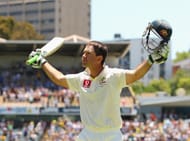
| Innings | Runs | Average | 50s/100s |
|---|---|---|---|---|
No.3 | 196 | 9904 | 56.27 | 43/32 |
No.4 | 28 | 1086 | 40.22 | 8/2 |
No.6 | 45 | 1989 | 49.72 | 8/7 |
Ricky Ponting knew only one way to bat – counterattack. He was the feared No.3 who would walk in with Richards-like swagger after the classic Langer-Hayden act that made up for the vanguard of the Invincible Australian team. At one point, he was slated to overtake Sachin as the game’s most prolific scorer, a rivalry of the gods.
He finished on 13378 runs with 41 centuries at an average of 51.85. Although a bulk of his runs came at No.3, he played some sublime knocks at No.6 as well, with a great conversion record early in his career, marking him as probably the greatest Australian batsman after Bradman.
#9 Dilip Vengsarkar
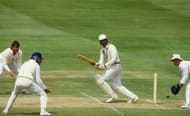
Innings | Runs | Average | 50s/100s | |
|---|---|---|---|---|
No.3 | 74 | 2763 | 40.04 | 11/8 |
No.4 | 64 | 2605 | 48.24 | 15/7 |
No.5 | 30 | 1244 | 49.76 | 8/2 |
For most players, 116 Tests and 6868 runs with 17 centuries means a good career. For Vengsarkar’s talent, obvious from his teens, it was an underachievement.
He finished eventually with an average of 42.13 although he ensured he stayed over 40 wherever he batted in the middle order. Vengsarkar, known for scintillating tons, especially at the Lord’s (first to score three in Lord’s against England), was elegant and a great player of pace and spin alike, a rare quality which like Laxman, he put to great use against the toughest of oppositions.
#8 Michael Hussey
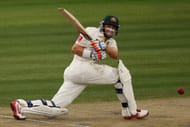
Innings | Runs | Average | 50s/100s | |
|---|---|---|---|---|
No.4 | 62 | 2531 | 46.01 | 14/7 |
No.5 | 38 | 1978 | 59.93 | 9/6 |
No.6 | 26 | 1242 | 51.75 | 4/5 |
Mr. Cricket got an entry into cricket after turning 30. He still managed to play 79 Tests scoring 6235 runs at 51.52 with 48 50+ scores in 137 innings. He still managed, importantly, to retire when still in good nick and when he still commanded a place in the side.
Hussey moved around the middle order, beginning his international career with the great Ponting still around and holding Australia together during its transition phase after the side lost many greats.
Interestingly, the great man who was a specialist opener at first class level became one of the game’s greatest contemporary middle order greats, shielding Michael Clarke many a times and following up on Ponting’s heroic acts during other times.
Hussey, a true gentleman, is also amongst the game’s most adored players for his work ethic and attitude towards the game and the opponents, one of competition and reverence.
#7 Greg Chappell
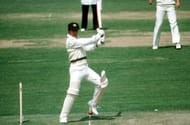
| Innings | Runs | Average | 50s/100s |
|---|---|---|---|---|
No.3 | 38 | 1649 | 43.39 | 6/5 |
No.4 | 86 | 4316 | 59.12 | 19/15 |
No.5 | 13 | 610 | 67.77 | 5/1 |
Chappell is probably as Australian as the term ‘Australian’ gets – blunt, competitive, stone-cold aura and aggressive. The controversial skipper was also versatile, having occupied three important positions in the middle order with distinction.
Chappell, in his career, managed more than 7000 runs at an impressive average of close to 54 with 24 centuries in 151 innings and another 31 half centuries, a 50+ score every three innings – hallmark of a dependable batsman.
Chappell’s lowest average is at No.3 where he averaged a respectable 16.49. However, the man who was predominantly a No.4 averaged 67.77 at No.5, before climbing up. Not many have made the transition as beautifully, a good example being Michael Clarke, who was spectacular at No.5 but never really did well at No.4. Chappell also had a brilliant century conversion rate at No.4.
#6 Viv Richards
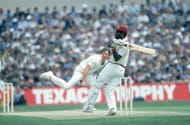
Innings | Runs | Average | 50s/100s | |
|---|---|---|---|---|
No.3 | 59 | 3508 | 61.54 | 14/12 |
No.4 | 41 | 1566 | 41.21 | 9/4 |
No.5 | 63 | 2720 | 47.71 | 18/6 |
Decades after his retirement, the original master blaster is still a cult hero. Known for the swagger that intimidated bowlers, Viv Richards played for pride as a captain who never lost a series and a batsman who, with the symbolic cap, the stigma of fearlessness, smashed the fastest of bowlers.
Richards was way ahead of his time with 8540 runs from 182 innings at an average of over 50 and with 69 50+ scores. But, it was not so much the incredible stats that made the legend as the aura and the impact he had whenever he walked in.
At No.3, he followed the terrific Desmond Haynes-Gordon Greenidge act, raking up an average of 61.54 at breath-taking pace at a time when strike-rates in Tests were an unknown entity. To put matters into perspective, Richards averaged 47 with a strike-rate of 90 in ODIs three decades ago. Even now, those are sublimely supreme numbers.
#5 Ian Bell
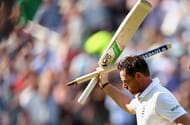
Innings | Runs | Average | 50s/100s | |
|---|---|---|---|---|
No.3 | 41 | 1572 | 40.30 | 12/2 |
No.4 | 49 | 1558 | 33.14 | 11/4 |
No.5 | 60 | 2461 | 48.25 | 11/9 |
No.6 | 37 | 1618 | 59.92 | 9/6 |
At 33 years of age, with a career-defining shift back to the all-important No.3 position, Ian Bell might still be destined for greatness. Gifted with silky touch like David Gover and VVS Laxman, Bell has often been blamed for not realizing his complete potential. But his artistry is easy on the eye and he has been the backbone of some of England’s greatest Ashes triumphs.
Bell averages only 33 at No.4 but at No.6 he more than makes up for the fall with an average close to 60. Overall, Bell has 7546 runs in 114 Tests with an average of 43.36, a stat a lot of his fans will look at wistfully. He sits right in the 50+ scores’ ratio with 67 of them in 197 innings at a healthy strike-rate.
Maybe, at the rear end of his career, Bell has started ringing the bells at the doors to greatness!
#4 Sir Gary Sobers
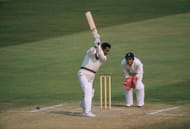
Innings | Runs | Average | 50s/100s | |
|---|---|---|---|---|
No.4 | 24 | 1530 | 63.75 | 4/6 |
No.5 | 37 | 1895 | 59.21 | 8/7 |
No.6 | 57 | 2614 | 53.34 | 11/8 |
Some call him the world’s greatest all-rounder. In the true sense of the word, it was true probably, bowling spin and seam, taking catches at slip and smashing the ball with flamboyance.
Sobers belongs to a rare breed of players who average over 50 in three different positions. He finished with an unbelievable average of 57.78 in 93 Tests with over 8000 runs. That’s a legendary player already. Add to that 235 wickets and 109 catches and you do really have a case for the greatest Test player ever!
#3 Clive Lloyd
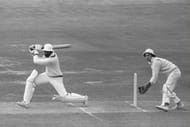
Innings | Runs | Average | 50s/100s | |
|---|---|---|---|---|
No.4 | 33 | 1414 | 44.18 | 5/3 |
No.5 | 72 | 3049 | 46.19 | 14/8 |
No.6 | 47 | 2114 | 49.16 | 13/6 |
No.7 | 18 | 709 | 47.26 | 6/1 |
The chief of one of the game’s greatest teams, arguably ‘the greatest’, the original Invincibles, Lloyd was a born leader, bringing together a pack of ferociously talented players and moulding a world-beating side out of them.
A man who could walk in as captain alone, he pulled his weight with the heavy bat and enormous back-lift, averaging over 40 across four different positions in the middle order. Predominantly a No.5, Lloyd has three centuries at No.4 as well and a solitary one at No.7 showing he could play different kinds of bowling under different conditions when the ball was old or new.
#2 Allan Border

| Innings | Runs | Average | 50s/100s |
|---|---|---|---|---|
No.3 | 36 | 1554 | 47.09 | 8/4 |
No.4 | 88 | 3783 | 50.44 | 21/8 |
No.5 | 70 | 3071 | 52.05 | 15/9 |
No.6 | 63 | 2556 | 52.16 | 17/6 |
The Australian great who pulled them out of Ashes disaster and won the World Cup was a man of true grit. He also represents the unique case of playing at No.3 early on before dropping down to the middle order. Border was a bullfighter on the cricket ground, who eventually ended up as the then most prolific run-getter in Tests.
Border’s versatility is evident from the fact that he averaged over 50 from three different positions and 47 at No.3. The great man finished with 11174 runs in 156 matches at an average of 50.56.
He had 90 50+ scores in 265 innings just making our cut of 1 in every 3 innings – Australia’s Mr. Dependable and more importantly, the scores coming when the chips were down. Border shaped the ethos of the Australian grit and a thunderous team that eventually laid foundations for the invincible aura a decade later.
#1 VVS Laxman
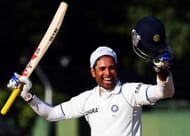
Innings | Runs | Average | 50s/100s | |
|---|---|---|---|---|
No.3 | 37 | 1611 | 44.75 | 8/4 |
No.4 | 11 | 500 | 50.00 | 4/1 |
No.6 | 67 | 2760 | 50.18 | 20/5 |
No.5 | 74 | 2877 | 47.16 | 17/6 |
Very Very Special Laxman is probably one of the world’s most noted crises specialists. He has won unbelievable games for India, like the epic match at Kolkata from No.3, the one in Durban against South Africa at No.6 and many more. What Laxman is not remembered for is his versatility. He has never played at a fixed position, although he did eventually make an art form out of batting at No.5 and No.6.
Laxman averaged 46 with 8781 runs in 225 innings. A late starter, he still managed to play 134 Tests in India, a fabulous evidence of his reliability, bringing his best performances against the toughest sides. That is why Laxman has always been considered a class apart, his runs gold-dust, coming in the toughest times. Laxman rarely exploited easy batting conditions and opponents, boredom probably setting in.
What Laxman isn’t remembered for is the fact that he is a rare batsman in the history of Test cricket to average more than 40 in four different batting positions with centuries at each position and a minimum of 500 runs. From being technically adept to play at No.3 to handling the tail like the great chase against Australia with Ishant Sharma on the other end, Laxman has been there and done it all.
Follow IPL Auction 2025 Live Updates, News & Biddings at Sportskeeda. Get the fastest updates on Mega-Auction and cricket news
